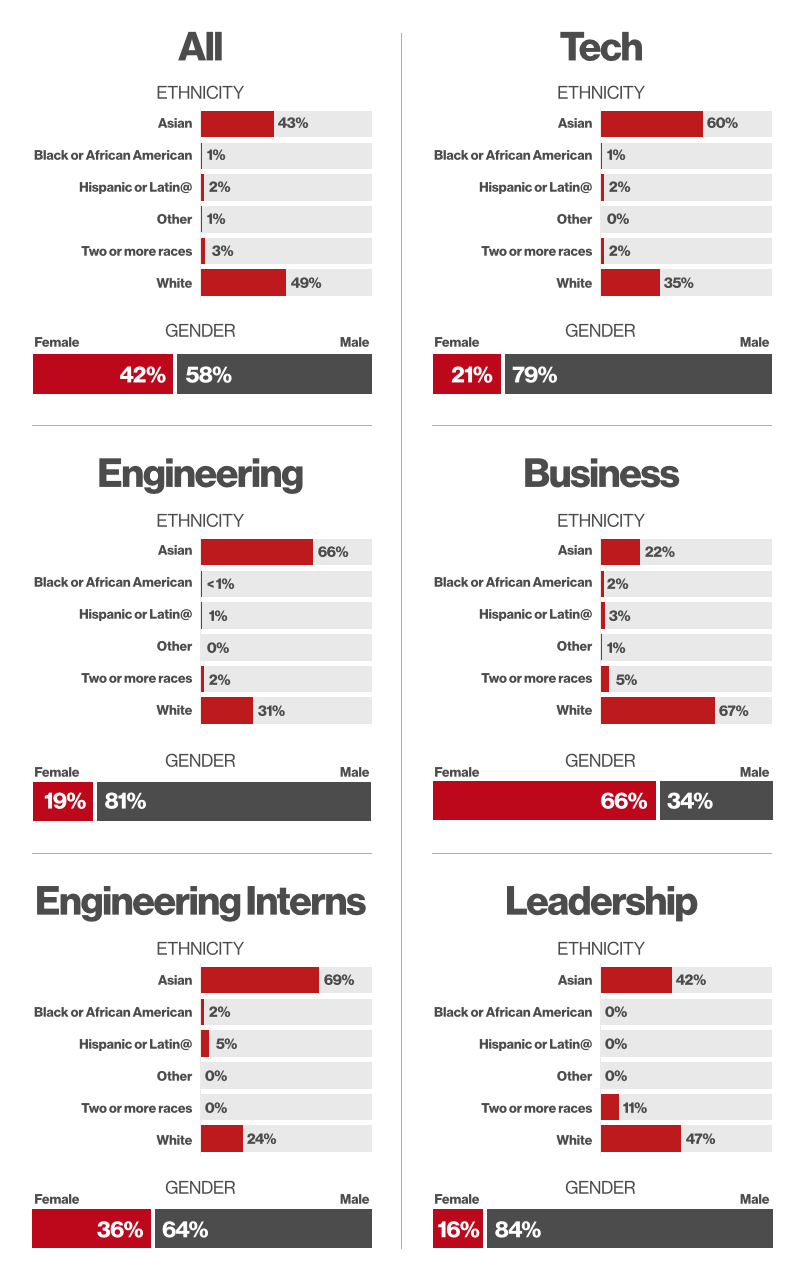There’s been a lot of talk lately about the lack of diversity in the tech industry. Back in 2013, one of our engineers Tracy Chou kicked off the “where are the numbers?” initiative, which revealed just how low the numbers really were. Now that companies are regularly reporting their data, it’s clear not a lot of progress has been made since then.
We think one reason it’s been so hard to get numbers to change is that companies haven’t stated specific goals. So today, we’re doing something unprecedented—we’re going on record with our hiring goals for 2016. We’re also sharing details about the new programs and improvements we have planned.
Where we are now
We've made some modest progress over the past year, with our number of female employees growing from 40% to 42%, engineering interns increasing from 32% to 36% female, and women engineers hired out of school increasing from 28% to 33%. But we have more work to do to increase the number of employees from all underrepresented backgrounds, which is why we’re setting goals and taking the steps below.
Our goals for 2016
Increase hiring rates for full-time engineering roles to 30% female.
Increase hiring rates for full-time engineers to 8% underrepresented ethnic backgrounds.
Increase hiring rates for non-engineering roles to 12% underrepresented ethnic backgrounds.
Implement a Rooney Rule-type requirement where at least one person from an underrepresented background and one female candidate is interviewed for every open leadership position.
How we plan to get there
Expand the set of universities we recruit from, and launch an early identification intern program for freshman and sophomore students from underrepresented backgrounds.
Work with outside strategy firm Paradigm to set up Inclusion Labs at Pinterest, where we’ll experiment with new ways to improve diversity.
Have every employee participate in training to prevent unconscious bias.
Support the creation of a training and mentorship program to maximize the impact of Black software engineers and students, led by one of our engineers.
By sharing these goals publicly, we’re holding ourselves accountable to make meaningful changes to how we approach diversity at Pinterest. We’ll also be sharing what’s working and what isn’t as we go, so hopefully other companies can learn along with us. Over time, we hope to help build an industry that is truly diverse, and by extension more inclusive, creative and effective.

*Gender data is global and ethnicity data is U.S. only. All data includes hires starting through September 2015. This is not based on EEO-1 reports; however, ethnicity refers to the EEO-1 categories which we know are imperfect categorizations of race and ethnicity, but reflect the U.S. government reporting requirements.
**Other includes American Indian, Alaskan Native, Native Hawaiian and Pacific Islander.
***Tech includes Engineering, Product Management, and Product Design. Business includes all disciplines outside of Tech.
—Evan Sharp, Co-Founder and Chief Creative Officer, currently pinning to Architectural Sections